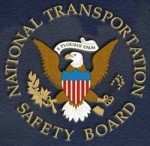Tue, Nov 17, 2009
Wants Stricter Guidelines For Government Helo Operators,
Legislation From FAA
 The NTSB Monday issued a set of
recommendations for the FAA and Public Helicopter Emergency Medical
Services Operators, following a 2008 fatal accident in Prince
Georges County, Maryland in which three people were killed and
another sustained serious injuries. The helicopter was being
operated by the Maryland State Police in a medevac operation.
The NTSB Monday issued a set of
recommendations for the FAA and Public Helicopter Emergency Medical
Services Operators, following a 2008 fatal accident in Prince
Georges County, Maryland in which three people were killed and
another sustained serious injuries. The helicopter was being
operated by the Maryland State Police in a medevac operation.
The NTSB determined that the probable cause of this accident was
the pilot's attempt to regain visual conditions by performing a
rapid descent and his failure to arrest the descent at the MDA
during a nonprecision approach. Contributing to the accident were
(1) the pilot’s limited recent instrument flight experience,
(2) the lack of adherence to effective risk management procedures
by the MSP, (3) the pilot’s inadequate assessment of the
weather, which led to his decision to accept the flight, (4) the
failure of the Potomac Consolidated Terminal Radar Approach Control
(PCT) controller to provide the current ADW weather observation to
the pilot, and (5) the increased workload on the pilot due to
inadequate FAA air traffic control handling by the DCA Tower and
PCT controllers.
In light of the accident, the NTSB has recommended that
operators of medical helicopters, and in particular governments
engaging in medevac operations:
- Develop and implement flight risk evaluation programs that
include training for all employees involved in the operation,
procedures that support the systematic evaluation of flight risks,
and consultation with others trained in helicopter emergency
medical services flight operations if the risks reach a predefined
level.
- Use formalized dispatch and flight-following procedures that
include up-to-date weather information and assistance in flight
risk assessment decisions.
- Install terrain awareness and warning systems on your aircraft
and provide adequate training to ensure that flight crews are
capable of using the systems to safely conduct helicopter emergency
medical services operations.
 In a companion letter to the FAA,
NTSB Chair Deborah Hersman recommends that Administrator Babbitt
seek specific legislative authority to regulate helicopter
emergency medical services (HEMS) operations conducted using
government-owned aircraft to achieve safety oversight commensurate
with that provided to civil HEMS operations.
In a companion letter to the FAA,
NTSB Chair Deborah Hersman recommends that Administrator Babbitt
seek specific legislative authority to regulate helicopter
emergency medical services (HEMS) operations conducted using
government-owned aircraft to achieve safety oversight commensurate
with that provided to civil HEMS operations.
In addition, the NTSB reiterated the following previously issued
recommendations to the Federal Aviation Administration:
- Require all emergency medical services (EMS) operators to
develop and implement flight risk evaluation programs that include
training all employees involved in the operation, procedures that
support the systematic evaluation of flight risks, and consultation
with others trained in EMS flight operations if the risks reach a
predefined level.
- Require all emergency medical services (EMS) operators to
install terrain awareness and warning systems on their aircraft and
to provide adequate training to ensure that flight crews are
capable of using the systems to safety conduct EMS operations.
- Require all rotorcraft operating under 14 Code of Federal
Regulations Parts 91 and 135 with a transport-category
certification to be equipped with a cockpit voice recorder (CVR)
and a flight data recorder (FDR). For those transport-category
rotorcraft manufactured before October 11, 1991, require a CVR and
an FDR or an onboard cockpit image recorder with the capability of
recording cockpit audio, crew communications, and aircraft
parametric data.
More News
From 2023 (YouTube Versions): Flying Motorcycle, That Is… "First Flight was achieved under cloudy skies but calm winds. The Samson Sky team, positioned along the runway, wat>[...]
A Few Questions AND Answers To Help You Get MORE Out of ANN! 1) I forgot my password. How do I find it? 1) Easy... click here and give us your e-mail address--we'll send it to you >[...]
Discrete Code As used in the Air Traffic Control Radar Beacon System (ATCRBS), any one of the 4096 selectable Mode 3/A aircraft transponder codes except those ending in zero zero; >[...]
Beyond Visual Line Of Sight (BVLOS) The operation of a UAS beyond the visual capability of the flight crew members (i.e., remote pilot in command [RPIC], the person manipulating th>[...]
Aero Linx: Florida Antique Biplane Association "Biplanes.....outrageous fun since 1903." That quote really defines what the Florida Antique Biplane Association (FABA) is all about.>[...]
 Classic Aero-TV: The Switchblade Flying Car FLIES!
Classic Aero-TV: The Switchblade Flying Car FLIES! ANN FAQ: Q&A 101
ANN FAQ: Q&A 101 ANN's Daily Aero-Term (04.12.24): Discrete Code
ANN's Daily Aero-Term (04.12.24): Discrete Code ANN's Daily Aero-Term (04.13.24): Beyond Visual Line Of Sight (BVLOS)
ANN's Daily Aero-Term (04.13.24): Beyond Visual Line Of Sight (BVLOS) ANN's Daily Aero-Linx (04.13.24)
ANN's Daily Aero-Linx (04.13.24)




